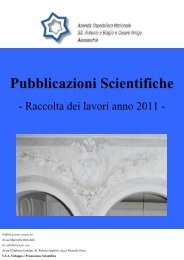Working Paper of Public Health Volume 2012 - Azienda Ospedaliera ...
Working Paper of Public Health Volume 2012 - Azienda Ospedaliera ...
Working Paper of Public Health Volume 2012 - Azienda Ospedaliera ...
You also want an ePaper? Increase the reach of your titles
YUMPU automatically turns print PDFs into web optimized ePapers that Google loves.
<strong>Azienda</strong> <strong>Ospedaliera</strong> Nazionale“SS. Antonio e Biagio e Cesare Arrigo”<strong>Working</strong> <strong>Paper</strong> <strong>of</strong> <strong>Public</strong> <strong>Health</strong>nr. 7/<strong>2012</strong>smoking, etc.) with genetic risk factors accounting for 5-10% <strong>of</strong> breast cancer cases (cf.Evans and Howell, 2007; Madigan et al., 1995; Geber et al., 2003). Empirical evidenceshows that the breast cancer incidence tends to be higher across richer countries, measured byGDP per capita and number <strong>of</strong> Computed Tomography. The drivers <strong>of</strong> these findings can bedue to several factors, mainly localized in richer countries that are group in three main areas: The wealth, well-being and current socio-economic changes <strong>of</strong> richer countries are proneto a higher demand <strong>of</strong> two main innovations for fertility control and post-menopausaltreatments represented by Oral Contraceptive pill (OCs) and Hormone Therapy (HT).Exogenous exposures to estrogen, presents in OCs and HT, increase the breast cancer risk(Klassen and Smith, 2011, p. 219). Travis and Key (2003) discuss about theepidemiological and experimental evidence <strong>of</strong> estrogen in the etiology <strong>of</strong> breast cancer(p.239). They show that women currently using OCs and/or who had used them in thepast 10 years have a slightly higher risk <strong>of</strong> breast cancer. Instead, the breast cancer riskamong women that use HT for 5 years or longer is 35% (Travis and Key, 2003, p. 238.).Gaffield et al. (2009) evidence as women who took OCs in the period before the 1975may be at greater risk (p. 372). Because <strong>of</strong> high adverse effects <strong>of</strong> OCs, there has been areduction <strong>of</strong> hormone in their content. In fact, estrogen dose greater than 50µgcharacterizes pills between 1964 and 1971, for instance at the beginning Envoid (the firstcontraceptive pill) contained 150µg estrogen and 9.85µg progestin, in 1965 the contentwas 100µg estrogen and 2.5µg progestin (Tyrer, 1999, p. 13S). Since 1983 the majority<strong>of</strong> pills has a dose <strong>of</strong> about 50µg. Higher risk <strong>of</strong> breast cancer in richer countries may bedue to several factors. First <strong>of</strong> all, the industrialization process in many countries hasincreased the wealth and well- being with affluent social class, mainly in westerncountries. The improvement <strong>of</strong> average social class is “the fundamental driver <strong>of</strong> materialand social resources, and occurs ‘logically and materially prior its expression in thedistribution <strong>of</strong> occupation, income, wealth, education and social status’ ”(Klassen andSmith, 2011, p. 231). Since 1960s, the use <strong>of</strong> OCs has had an exponential growth and theworldwide users <strong>of</strong> contraceptive pill was greater 12.5 million in 1967 (Tyrer, 1999, p.12S) and about 200 million women worldwide in 1996. Nowadays OCs is widely usedacross all countries. Tyrer (1999, p. 15S) claims that: “by the end <strong>of</strong> reproductive years,>80% <strong>of</strong> United States women have used the pill for an average <strong>of</strong> about 5 years”. Recentmedical literature confirms a possible association between breast cancer and OCs eitheroverall or especially in subgroups <strong>of</strong> women. For instance, Travis and Kay (2003) show14


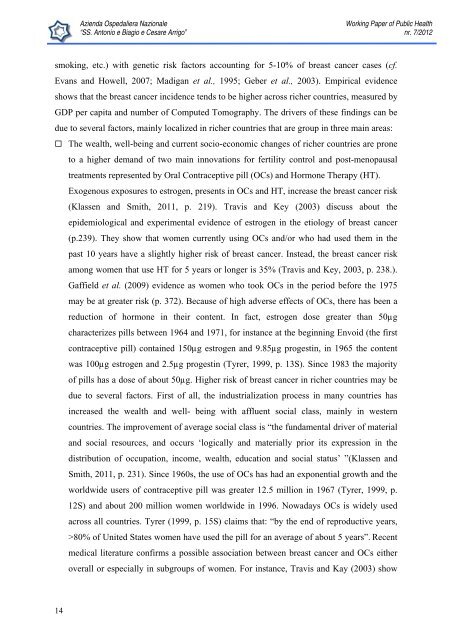
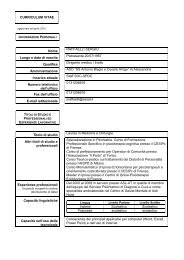
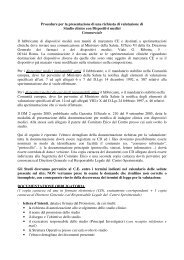

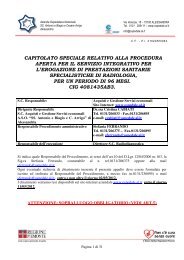
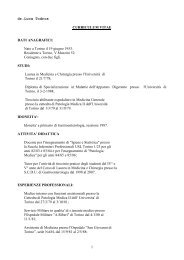


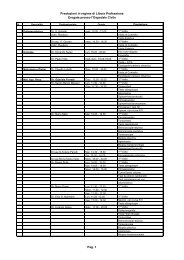


![[torino - 1] lastampa/urc/01 ... 26/10/09 - Azienda ...](https://img.yumpu.com/44058002/1/190x32/torino-1-lastampa-urc-01-26-10-09-azienda-.jpg?quality=85)

